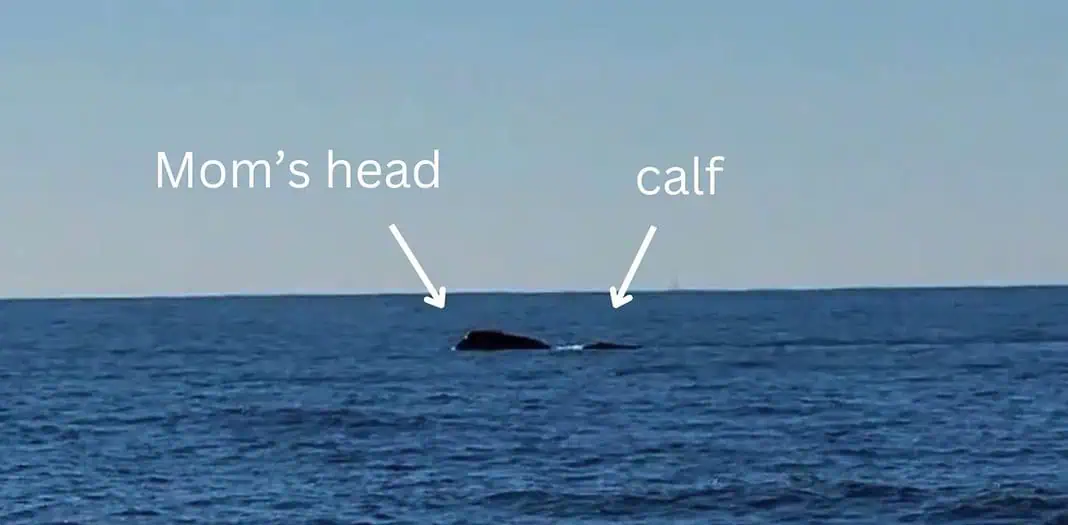This first North Atlantic Right Whale calf of the season was spotted recently off the US coast of South Carolina.
According to a Florida Fish and Wildlife Conservation Commission Facebook post:
“Most of the physical features used for photo-identification of right whales are not available to us, so we have not been able to identify the individual mother from this sighting, but the images provided clearly show a calf. Additional sightings of this pair by researchers may help lead to a match eventually, so stay tuned for updates.”
The mother and calf were spotted about 4 nautical miles (7.4 km) off Cape Romain, South Carolina on November 24th, the first confirmed sighting duding the 2024-2025 calving season, according to FWC:
“There are approximately 70 reproductively active females in the North Atlantic right whale population. Recent trends in calving include fewer first-time mothers, older first-time mothers, and more resting years between births. This means that each female is producing fewer calves over her lifetime. Recruitment of new mothers into the population is expected and is essential for population growth. However, sightings of first-time mothers have been sparse since 2016 – around the start of the right whale Unusual Mortality Event (UME).”
Oceana Campaign Director Gib Brogan said:
“This Thanksgiving, we have something rare, fragile, and critically important to be grateful for: the first North Atlantic right whale calf of the season. It’s fitting timing for the season’s first right whale calf to be spotted the week of Thanksgiving. The first calf of every calving season brings hope and excitement for the future of this critically endangered species, with only around 370 whales remaining. Unfortunately, this first calf also evokes the fresh and painful memory of the first calf from last season that was killed by a boat strike after only a few months of entering this world. North Atlantic right whales — especially mothers and calves–face constant threats from boat strikes and fishing lines which can both cause serious injury and death. As this critically endangered species does its best to recover, bringing one new life at a time, we must allow them to rebuild. It’s up to the National Oceanic and Atmospheric Administration (NOAA) to spread awareness and enforce the current vessel speed rules to provide the best chance of safety for these mothers and calves, and to prevent their future obituaries.”

